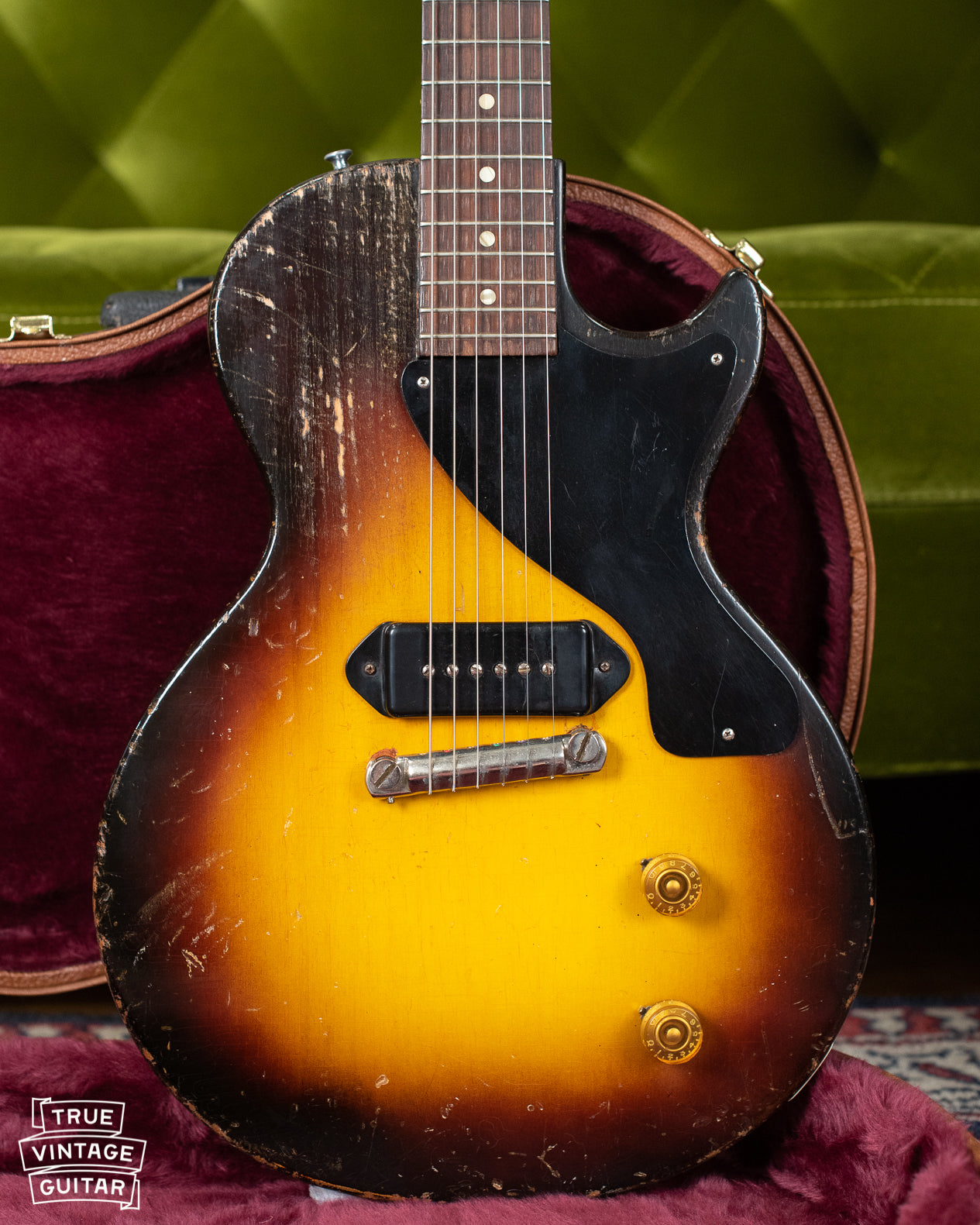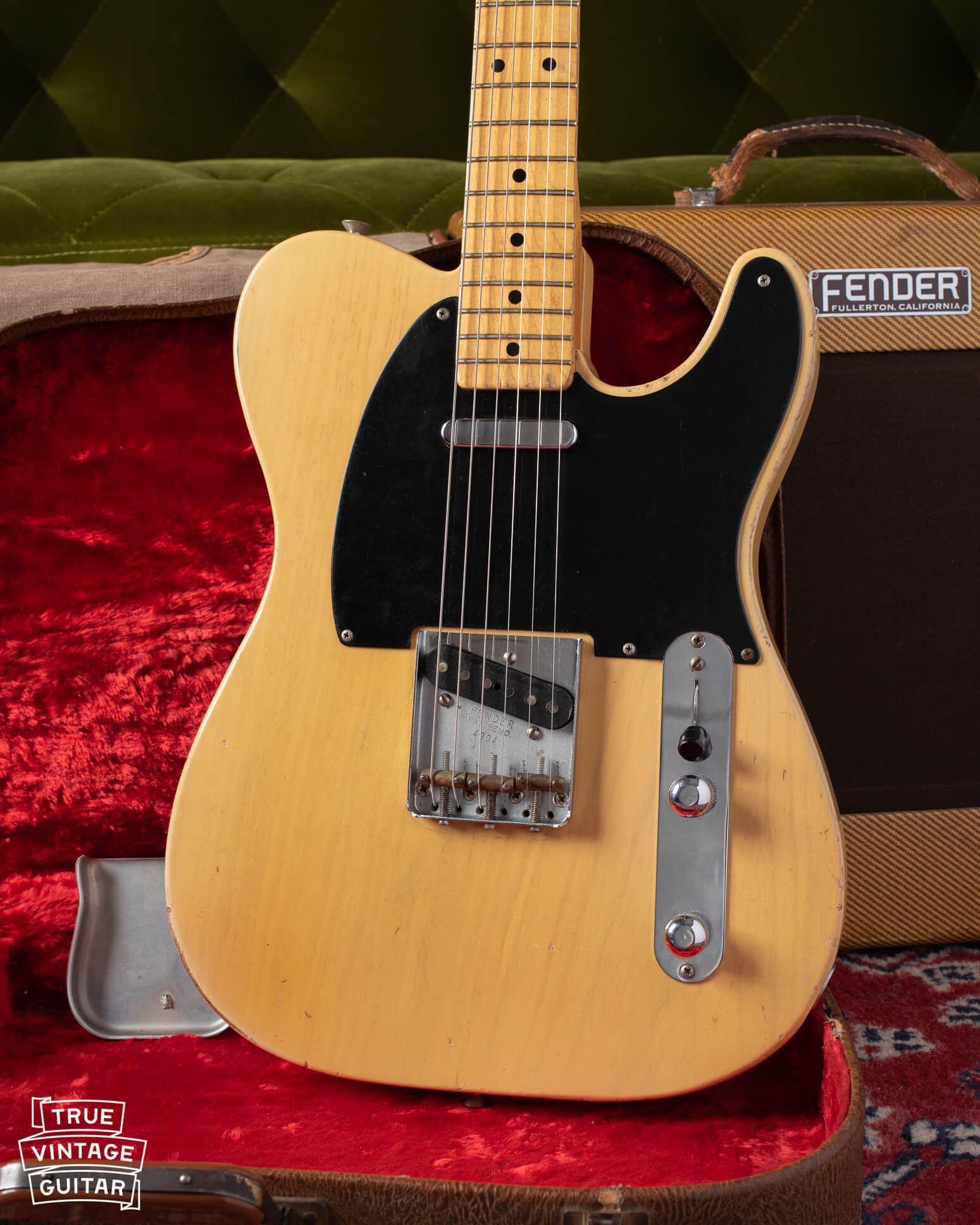Lots of great vintage Gibson Les Paul guitars came through the shop in 2020, but one of my clear favorites is this 1959 Gibson Les Paul Junior in Cherry Red finish with rare stinger headstock. It's in amazingly clean and well preserved and even has its original case and leather strap.
I'm always a vintage Gibson guitar buyer, but I'm especially looking for 1950s Gibson Les Paul electric guitars. You can contact me here to sell a vintage Gibson guitar.
If you're looking for help with Gibson Les Paul guitar dating, check out How to date a vintage Gibson Les Paul guitar.

This 1959 Gibson's Les Paul Junior model electric guitar was the budget friendly, student grade model that filled the lowest rung on the 5 tier Les Paul lineup. Gibson may have originally intended it to be a student level guitar, but guitar players have recognized its potential as having the essential ingredients of the perfect rock and roll electric guitar. Its single P-90 pickup in the bridge position, wrap tail bridge, and full fretboard access make it a perfect guitar for that application! Not only that, but the neck profiles throughout the 1950s are fat and comfortable.
This 1959 Gibson Les Paul Junior is incredibly well preserved and retains all its original Cherry Red color. It conforms to the typical specifications for the model in 1959, except that it also features a black painted back of the headstock that tapers to a point just below the headstock. Gibson often painted the back of the headstock as a style cue on many upper level guitars, but it also applied the black paint in order to cover up a flaw in the wood that was revealed after the wood was milled. Many collectors call this a stinger because of the shape of the point.

But the stinger has nothing to do with this 1959 Gibson Les Paul Junior being a fantastic electric guitar. It weighed in at 7lbs 2 oz and had the typical 1950s nut width of 1 11/16". The neck profile measured .92" deep at the first fret and .99" deep at the 12th fret. This is on the larger side of normal for 1959, but I found it very comfortable to play.
It was clear from the clean condition of this 1959 Gibson Les Paul Junior that it had been spared of the abuse that many suffered in the 1960s, 70s, and 80s, but the clearest indication was the black paint that over the truss rod nut. Gibson didn't tape off the truss rod adjustment cavity when they finished the headstocks in black, but the paint comes off easily when you adjust the rod tension. Take a look at this adjustment cavity and see how the black paint on the nut is undisturbed. Amazing! I've only seen this on one other Gibson guitar.





Comments
W O W !